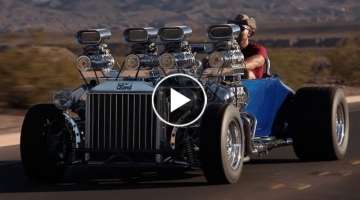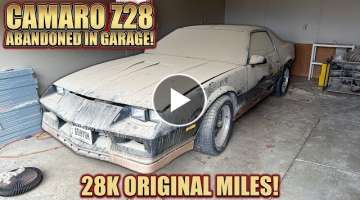1968 Corvette 427 Big Block Barn Find Rescue
The overall design theme featured hidden windshield wipers and headlights, and removable T-Tops. A luggage rack was optional on the coupe models. The new Corvette had been intended to launch in 1967, but the development process, structural imrovements, and detail refinements moved the car's introduction back by a further 12 months.
The 1968 Corvette continued to employ the fully independent 'C2' chassis configuration and continued to offer buyers the same optional high-performance engine options as before. One of the problems that plagued the designers was engine cooling - especially with the big-block engines with air-conditioning systems. Duntov had warned engineers about the disastrous buildup of underhood heat and hoped the issue would be resolved while he had been hospitalized in May of 1967. Upon his return, he was shocked to find the problem remained. His immediate solution, using his racing experience, was to add two rectangular holes cut near the front spoiler. Air gaps surrounding the radiator were blocked off, ensuring incoming air passed straight into the radiator. These updates were immediately applied to production cars on the assembly line.
The standard engine was the 327 cubic-inch V8 with overhead valves, hydraulic valve lifters, a Rochester four-barrel carburetor, a cast-iron block, 10.0:1 compression ratio, and 300 horsepower. The L71 aluminum head L89 427 cubic-inch, 535 horsepower engine was still offered as optional equipment. The Powerglide automatic transmission was no longer offered, instead replaced by a three-speed Turbo Hydra-Matic was offered which improved performance and fuel efficiency. Most were fitted with a four-speed manual transmission. Additional transmission options included a heavy-duty close-ratio four-speed manual floor shift unit, a wide-ratio four-speed manual with floor shift, and a close-ratio four-speed with floor shift. Performance options included power brakes, heavy-duty brakes, power steering, various rear axle ratios, and positive traction rear axle. The 'L68' 427 cubic-inch Tri-Power engine produced 400 horsepower, and the 'L71' 427 cubic-inch Tri-Power engine offered 435 horsepower. The 'L71/89' V8 with a 427 cubic-inch displacement with Tri-Power produced 435 horsepower. The 'L88' 427 CID V8 had a listed output of 430 horsepower but was actually closer to 530 horsepower.
Sponsored
Video
Sponsored
Facebook Comments
Sponsored































